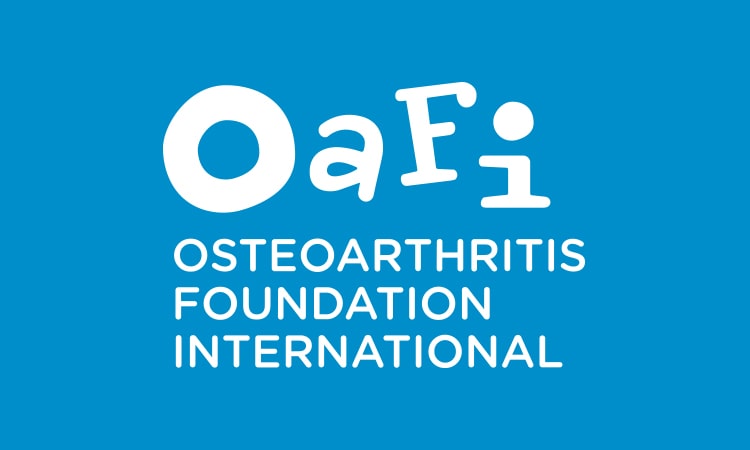- Foundation
- Actions
- Osteoarthritis
- Actuality
- OAFI Radio/TV
- Get Involved
- Contact
OAFI
Osteoarthritis International FoundationC/ Tuset, 19 · 3º 2ª
08006 Barcelona
(+34) 931 594 015
info@oafifoundation.comSchedule:
Monday-Thursday 9AM-6PM
Friday 8AM-3PM
-

-

-

The Role of the Family Physician in Osteoarthritis

Article courtesy of Dr. José Luis Llisterri Caro, Family Physician, Clínica Vallada de Valencia
Osteoarthritis
Osteoarthritis is a chronic, inflammatory, degenerative disease affecting the joints. The symptomatology of osteoarthritis is frequently associated with functional disability, as well as signs and symptoms of inflammation such as pain, stiffness and loss of mobility. It is the second most prevalent disease as a reason for consultation in primary care. It is estimated that 88% of patients with osteoarthritis have an average of 2.4 additional physical or mental comorbidities and that osteoarthritis induces the onset of functional disability, depression and loss of independence due in part to the concomitant presence of other pathologies.
The family physician is responsible for the management of the patient with osteoarthritis. This includes the initial evaluation for correct diagnosis, treatment and follow-up of the patient in the family, social, psychological and community context. Table 1 shows the basic aspects for a comprehensive assessment of patients with osteoarthritis.
Table 1. Comprehensive assessment of the person with osteoarthritis in primary care
- Social assessment:
- Influence on daily life: on daily activities, family duties, hobbies and leisure.
1.2 Lifestyle expectations.
- Assessment of the disease: expectations, knowledge of the disease.
- Occupational assessment: work capacity, adaptations in the home or workplace.
- Mood: detection of depression, anxiety and other emotional disturbances.
- Sleep quality.
- Support network: caregivers, organizations, etc.
- Coexistence of other acute or chronic pain, treatable or untreatable.
- Attitude for physical exercise.
- Presence of comorbidities: cardiovascular disease (hypertension, diabetes, etc.), renal disease, respiratory disease, mental illness, multi-pathological patient, frail patient.
- Attitude and aptitude to surgery: expectations.
- Evaluation of the most appropriate drug: dosage, posology, interactions, side effects…
- Risk of falling.
- Pain assessment.
- Assessment of self-help and self-care strategies.
Modified of: Nieto E. Aten Primaria. 2014;46 Supl 1:62-68.
Basic treatments by the family physician
Basic treatments (health education, exercise and weight loss in case of obesity) should be offered from primary care to all patients as part of self-care, a transcendental aspect to increase the integral quality of life throughout life. In this sense, patients should receive information and guidance on the promotion of healthy lifestyles (healthy and balanced diet), identification of risk factors according to their age (high blood pressure, cholesterol, diabetes, etc.), knowledge of the symptoms of their disease and how to manage them, acceptance of treatment and involvement in therapeutic compliance. One of the objectives in the management of osteoarthritis is to achieve the abandonment of the passive role of the patient, to turn him/her into a person with the capacity for self-care and self-management of his/her process (expert patient). Osteoarthritis support groups, self-management programs and patient education programs, such as those of the Osteoarthritis Foundation International (OAFI), can help to learn about self-care and improve disease management.
The treatment of osteoarthritis by the primary care physician involves, in addition to non-pharmacological options such as those described above, the selection of the most suitable drugs for each patient. In other words, individualized treatment should preside over the family physician’s therapeutic recommendations. The drugs used in osteoarthritis include paracetamol, minor and major opioids, NSAIDs (non-steroidal anti-inflammatory drugs), topical treatments, intra-articular treatments, and chondroprotective drugs with a SYSADOA (slow-acting symptomatic) and DMOAD (disease course modifiers). The use of the different drugs will depend on the intensity and location of the osteoarthritis as well as on the different characteristics of the patient: age, comorbidity, possible interactions, degree of disability, and the presence or absence of synovitis.
The family physician should consider when to refer the patient with osteoarthritis. Various situations such as: diagnostic doubts, significant deformity, joint limitation and blockage, poor therapeutic response and surgical assessment, imply requesting a referral to Rheumatology or Traumatology.
Bibliographic references
- Croft P, Porcheret M, Peat G. Managing osteoarthritis in primary care: the GP as public health physician and surgical gatekeeper. Br J Gen Pract. 2011 Aug;61(589):485-6. doi: 10.3399/bjgp11X588231. PMID: 21801544; PMCID: PMC3145500.
- Osteoarthritis. American Academy of Family Physicians. Last Updated January 2021. Familydoctor.org. Available at this link
- Nieto E. Seguimiento del paciente con artrosis. Manejo coordinado y criterios de derivación entre niveles asistenciales. Aten Primaria. 2014;46 Supl 1:62-68.
- Herrero M, Giménez S, Vergara J, Vilés E, Martínez H, Rodríguez GC, Vergés J, Llisterri JL, Frías JF, Díaz JA. Comorbilidad asociada a pacientes diagnosticados de artrosis de rodilla en España: resultados del estudio EMARTRO. Semergen. 2015;41 (Espec Congr): 23.
Article courtesy of Dr. José Luis Llisterri Caro, Family Physician, Clínica Vallada de Valencia
Photo by Austin Distel on Unsplash




















